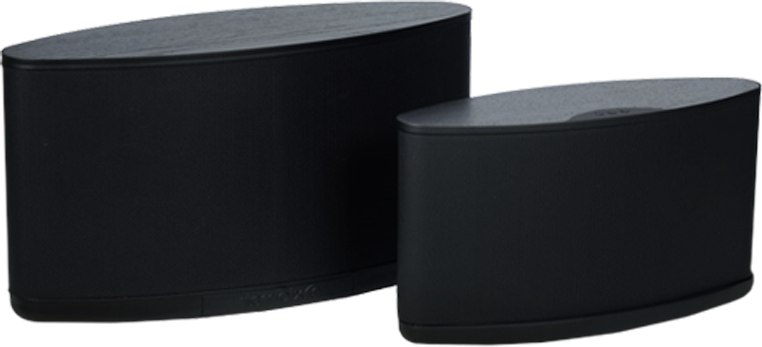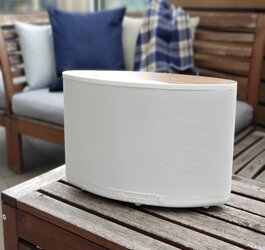Why Did Speaker Size Change Over Time?
Daniel Ho, one of our subscribers from YouTube, commented: “Why did speakers all of a sudden get narrower, they used to be fairly big wide things and now everything is small and slim. Why did that happen?” Well, I'm going to speak from my own experience and perspective. There are many companies still making speakers that are a more vintage or traditional shape with a wide baffle, but I think there's a number of reasons why speaker design changed. Back in the sixties, seventies, eighties, we would consider an AX 5 to be called a bookshelf speaker. Now frankly, you need a big bookshelf but most people actually mounted them on short stands. So it was almost like a short floor stander, but they were called bookshelves, and these days we tend to refer to them as big bookshelves.
Speaker History
These types of speakers were ubiquitous, particularly if you go through into the seventies and eighties, a two way eight inch bookshelf speaker with an eight inch woofer, every speaker manufacturer pretty much had one and they were very popular and it was not too big, not too small, you got good bass performance, good output. So what happened, why did speaker history change? Why did we move into a world where everything was getting narrower, slimmer?
I personally think that there were a few things going on. One I think was driven purely by aesthetics. As we moved from an era where the stereo system was in many times the focal point of a living space or living room. Remember all those beautiful, solid wood carved consoles, stereo consoles, that had all the equipment built in under a hinged lid, and once it was closed, it looked like a nice piece of furniture. But again, this was the focal point and there was an expectation that a good quality audio system was going to just take up space. So you made it look like a piece of furniture so it blended in.
TV Had An Effect On Speaker Sizes
As we shifted towards television becoming more commonplace, TVs started getting bigger and bigger. Then the advent of home theater and multi-channel audio in the home, which started originally with Quadraphonic (which was not a massive commercial success) but then into the early days of Dolby Pro Logic, and then as we know, Dolby Digital Atmos, DTS...
All of these things involved what? Adding more and more and more speaker channels. So you went from a pair of speakers to four speakers, to five speakers, or five speakers and a subwoofer to seven speakers to 11 for Atmos. It just goes on and on and on.
I think that part of the reason that speakers got slimmer and less bulky was due to that.
You now have a living space where you've got a system set up and it isn't the focal point for one thing. You've got the TV taking up probably a massive amount of space because it's a 65-70 inch screen now. And aesthetically you didn't want five or seven big speakers like this in the room. You may just not have space for it, but aesthetically it may not look good. So I think that's part of the reason that speaker manufacturers started to try and make the visual footprint of speakers smaller.

Decreasing Power Costs Had An Effect on Speaker Design Changes
I also think that there's a very good technical reason too. We have to remember that when we go back into the sixties in particular that amplifier power was very expensive and there were limitations.
In the vacuum tube days, getting a 100 watt per channel amplifier was a serious piece of metal. Big output transformers, big power transformers, multiple push/pull tube configurations, all of those things.
Larger Drive Units Make More Efficient Speakers
So loudspeaker manufacturers needed and were required to make highly efficient speakers, and one of the ways that you can do that is by having larger drive units. Now the penalty in many cases was bass performance, but a bigger driver in many cases will be more efficient. I think that as we went through the seventies, the eighties, into the nineties, amplifier power became cheaper and cheaper, so these days we have home theater receivers (inexpensive ones) and a hundred watts per channel is sort of a low end spec now.
I think that part of that was thinking that well, now we have more amplifier power so we can go to smaller drive units. There may be multiples of those drive units. Now there was then a period where driver technology and magnet technology that goes into drivers improved to the point where you can make a speaker that's just as efficient with multiple drivers in a slim cabinet as you ever could with one of the single big woofer two way systems. In my opinion that is why things got narrower.
Does Design Affect Speaker Performance?
I think we’ve learned a lot about the speaker industry and speaker design changes. The research that went on in the seventies, eighties, and has been continuing into measurements and into what parts of a speaker's design really impacted performance. I mean, if we go back to the early days, slapping some drive units in the cabinet, making it a certain size that was efficient to the manufacturer, doing up a crossover network, predominantly listening and doing some rudimentary measurements (maybe not even in an anechoic chamber) got you a decent loudspeaker.
But as we learned about the importance of off axis response, we’d add angles to the speaker. We learned about things like diffraction (and that's an important one), a narrower baffle will have less acoustic diffraction than a wide one. So there are things that you can do now with those slimmer cabinets that you just couldn't do in terms of performance from those wider cabinets. I will say yes, there are manufacturers that are still in the belief of the opposite, that wide baffles are important, and depending on their designs and their design goals, that's perfectly legitimate. I'm again, just speaking for another one of the reasons that I think we've gone to slimmer speakers.
So hopefully this was of interest to you. I've had that question not just from Daniel but from a number of people over the years.














